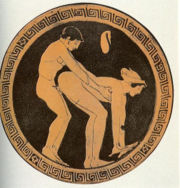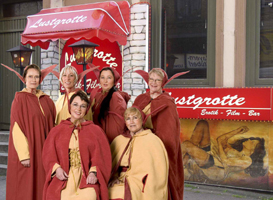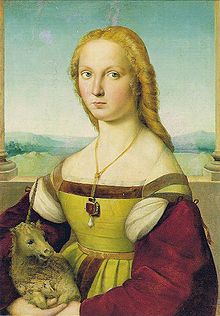Amandla the power of Music
You know how it feels when you hear a song that reminds you of a special someone, your emotions go wild and your memories are on express recall. Music is freaking personal and at times overwhelming. Imagine how it feels when your life depends on music. During the Apartheid regime in South Africa people used music to hold onto their hope, for a better life
For most of us, Apartheid is only part of history class, taught from a political point of view. This approach does not reflect the struggle black South-African's experienced during Apartheid, nor does anyone today can relate to it. So why not use music to tell the story!
Amandla (Zulu for Power), a documentary, connects the historic facts to real people and the important role music played during the struggles of black African's with the Apartheid regime.
The stories of revolution songs, footage of marches, interviews with young revolutionaries, and their experience and fears were mind blowing. I can relate, and therefore understand what it must have felt like. I can related and therefore understand how music was used to channel emotions and fears. Amandla tells the story from the peoples eyes. A story about music that throws the obvious in your face: how important the culture of music is to bring on social change.
Without culture a person could barley survive, and music is part of any culture. Music has the power to change your mood it makes you feel damn good, or freaking sad. Music shows your pride. Music is part of understanding cultural heritage. Music forwards ideas and ideals. Music brings people together. Music communicates, creates, and cooperates.
Understanding the Amandla of music, explains why so many oppressed groups use music as an instrument to confront realities, to fight back. The power music and lyrics hold, shows how fundamental important culture is to peoples identity. To understand music helps to see why South African Liberation Movement used music as a weapon to fight against Apartheid: ”Song is something that would communicate with people who otherwise would have not understood were we were coming from. Or you could give them a long political speech and they still wouldn’t understand, but I tell you if you finish that song people would be damn I know where you guys are coming from.” All people understand the language of music.
Even the French Revolution was driven by music, no other revolution led to so much drastically social change. Peasants, sick of their miserable life, wanted change. They fought for a new kind of society, an equal society. The none-aristocratic leaders of the French Revolution took music seriously because they knew it is a powerful tool to change the way people think and feel. In 1795, a school was founded to train bands for the new army, the National Guard. Laws were passed forcing the French people to sing republican hymns in theaters before plays were performed. Composers were encouraged to write revolutionary songs and within ten years more than a thousand songs were written. The most famous of them is Le Marseillaise, which today is know as the French national anthem. The same principle was used during Apartheid. Liberation Movement leaders used music to help connect people for the cause of social change.
Even the recent revolution in Egypt was fueled by music. A revolution that forced Egypt’s leader Mubarak to resign his position. The events in Egypt were just one part of the revolutionary actions of the Arab Spring that swept through Egypt, Libya, and elsewhere. The protesters in Egypt also used songs as a tool. Musician Ramy Essam, who played in Tahrir Square in downtown Cairo during the protest, wrote the song Leave, which was inspired by the slogans and chants that were shouted by the people around the Square:
“We are all united as one,
And what we ask for,
Is just one thing: Leave! Leave!
Down, down Husni Mubarak!
The people demand: Bring down the regime!
He is going away. We are not going anywhere!
We are all united as one,
And what we ask for, Is just one thing: Leave! Leave! Leave!”
All Freedom Songs captured the frustration, anger, and hope of the countries they originated in, just like the songs during Apartheid captured the frustration, anger, and hope of oppressed South Africans. So next time you listen to music feel the Amandla music has, and the impact that comes with such great power to change a society.
Watch Amandla here or if you have a HULU account watch it there.
For most of us, Apartheid is only part of history class, taught from a political point of view. This approach does not reflect the struggle black South-African's experienced during Apartheid, nor does anyone today can relate to it. So why not use music to tell the story!
Amandla (Zulu for Power), a documentary, connects the historic facts to real people and the important role music played during the struggles of black African's with the Apartheid regime.
The stories of revolution songs, footage of marches, interviews with young revolutionaries, and their experience and fears were mind blowing. I can relate, and therefore understand what it must have felt like. I can related and therefore understand how music was used to channel emotions and fears. Amandla tells the story from the peoples eyes. A story about music that throws the obvious in your face: how important the culture of music is to bring on social change.
Without culture a person could barley survive, and music is part of any culture. Music has the power to change your mood it makes you feel damn good, or freaking sad. Music shows your pride. Music is part of understanding cultural heritage. Music forwards ideas and ideals. Music brings people together. Music communicates, creates, and cooperates.
Understanding the Amandla of music, explains why so many oppressed groups use music as an instrument to confront realities, to fight back. The power music and lyrics hold, shows how fundamental important culture is to peoples identity. To understand music helps to see why South African Liberation Movement used music as a weapon to fight against Apartheid: ”Song is something that would communicate with people who otherwise would have not understood were we were coming from. Or you could give them a long political speech and they still wouldn’t understand, but I tell you if you finish that song people would be damn I know where you guys are coming from.” All people understand the language of music.
Even the French Revolution was driven by music, no other revolution led to so much drastically social change. Peasants, sick of their miserable life, wanted change. They fought for a new kind of society, an equal society. The none-aristocratic leaders of the French Revolution took music seriously because they knew it is a powerful tool to change the way people think and feel. In 1795, a school was founded to train bands for the new army, the National Guard. Laws were passed forcing the French people to sing republican hymns in theaters before plays were performed. Composers were encouraged to write revolutionary songs and within ten years more than a thousand songs were written. The most famous of them is Le Marseillaise, which today is know as the French national anthem. The same principle was used during Apartheid. Liberation Movement leaders used music to help connect people for the cause of social change.
Even the recent revolution in Egypt was fueled by music. A revolution that forced Egypt’s leader Mubarak to resign his position. The events in Egypt were just one part of the revolutionary actions of the Arab Spring that swept through Egypt, Libya, and elsewhere. The protesters in Egypt also used songs as a tool. Musician Ramy Essam, who played in Tahrir Square in downtown Cairo during the protest, wrote the song Leave, which was inspired by the slogans and chants that were shouted by the people around the Square:
“We are all united as one,
And what we ask for,
Is just one thing: Leave! Leave!
Down, down Husni Mubarak!
The people demand: Bring down the regime!
He is going away. We are not going anywhere!
We are all united as one,
And what we ask for, Is just one thing: Leave! Leave! Leave!”
All Freedom Songs captured the frustration, anger, and hope of the countries they originated in, just like the songs during Apartheid captured the frustration, anger, and hope of oppressed South Africans. So next time you listen to music feel the Amandla music has, and the impact that comes with such great power to change a society.
Watch Amandla here or if you have a HULU account watch it there.
anna25bell - 4. Sep, 19:25
3171 x

 The Greek writer Asclepiades writes of a prostitute named Hermione who wore a girdle embroidered with, "Love me always, but do not be jealous if others do as you do”(Vern38). In Athen, prostitutes used temporary body modifications to enhance their facial and body features as in stuffing their shoes with cork to appear taller, or use bustles to increase the size of their hips and breasts. Today’s women use wonder-bra’s to make their bosom look larger. That being said, it is safe to say that no woman in the western hemisphere will pad her hips to make them appear bigger. Here is an interesting thought" I am pretty sure no ancient prostitute would starve herself to death to be super-skinny either! Ancient prostitutes used a lot of make-up and layers of white lead, a lot of rouge, and soot to emphasize eyebrows. The effect was that prostitutes were easier to spot due to the fact that respectable Greek woman refused to paint their faces because they promoted a more natural looking face (Sherrow250). There, where not many sumptuary laws in ancient Greece, and the few the greeks had were not enforced. For instance, prostitutes had to dye their hair blond, which they did anyway, so they could distinguish themselves further from a boring housewife.
The Greek writer Asclepiades writes of a prostitute named Hermione who wore a girdle embroidered with, "Love me always, but do not be jealous if others do as you do”(Vern38). In Athen, prostitutes used temporary body modifications to enhance their facial and body features as in stuffing their shoes with cork to appear taller, or use bustles to increase the size of their hips and breasts. Today’s women use wonder-bra’s to make their bosom look larger. That being said, it is safe to say that no woman in the western hemisphere will pad her hips to make them appear bigger. Here is an interesting thought" I am pretty sure no ancient prostitute would starve herself to death to be super-skinny either! Ancient prostitutes used a lot of make-up and layers of white lead, a lot of rouge, and soot to emphasize eyebrows. The effect was that prostitutes were easier to spot due to the fact that respectable Greek woman refused to paint their faces because they promoted a more natural looking face (Sherrow250). There, where not many sumptuary laws in ancient Greece, and the few the greeks had were not enforced. For instance, prostitutes had to dye their hair blond, which they did anyway, so they could distinguish themselves further from a boring housewife.  (“Huren Tour”) one can see replications of a typical outfit worn by prostitutes in Hamburg during the late middle ages. The purpose of these restriction where to spot a prostitute quicker so one could discriminate against her, but in reality it helped potential customers to find a prostitute quicker. Either way, it worked for both parties. However, compared to other historical liberated women, during different time periods, prostitutes in the middle ages could not rise in class and become as popular as a Greek Hetaera. Prostitutes during the dark ages were for the most part restricted to certain areas and where not allowed to wear any luxury items. “In Bristol, England the hoods of prostitutes had to be made with a striped fur, different from the type worn by respectable women” (Vern124). In England, “the city of London, for example, specifically forbade prostitutes from ‘parading’ anywhere except in certain regulated districts,” and those women who did were thrown out of the city (Vern125). Laws banning prostitutes to brothels in designated areas, to prevent these women from rising in class. Every metropolitan area in Europe required prostitutes to live in a certain section of town and confined them in their activities. Most prostitutes lived in brothels, and if a prostitute serviced a customer outside that location she was confined to special quarters. Prostitutes who lived “in these quarters, wore clothes specified items such as armbands or other attire to distinguished them from respectable society matrons” (Vern 125).
(“Huren Tour”) one can see replications of a typical outfit worn by prostitutes in Hamburg during the late middle ages. The purpose of these restriction where to spot a prostitute quicker so one could discriminate against her, but in reality it helped potential customers to find a prostitute quicker. Either way, it worked for both parties. However, compared to other historical liberated women, during different time periods, prostitutes in the middle ages could not rise in class and become as popular as a Greek Hetaera. Prostitutes during the dark ages were for the most part restricted to certain areas and where not allowed to wear any luxury items. “In Bristol, England the hoods of prostitutes had to be made with a striped fur, different from the type worn by respectable women” (Vern124). In England, “the city of London, for example, specifically forbade prostitutes from ‘parading’ anywhere except in certain regulated districts,” and those women who did were thrown out of the city (Vern125). Laws banning prostitutes to brothels in designated areas, to prevent these women from rising in class. Every metropolitan area in Europe required prostitutes to live in a certain section of town and confined them in their activities. Most prostitutes lived in brothels, and if a prostitute serviced a customer outside that location she was confined to special quarters. Prostitutes who lived “in these quarters, wore clothes specified items such as armbands or other attire to distinguished them from respectable society matrons” (Vern 125).  The "ruling" Cortigianes of Venice became celebrated for their classical beauty, their conversational skills, and their intelligence. Estimates vary, but it is said that there were around 11,000 prostitutes servicing 300,000 venetian residents. With so many courtesans, it was tough for a man to tell the difference between a puttana and a married woman. The puttana, a lower class prostitute, was usually easier to spot. Some dressed like men wearing codpieces, and others wore dresses cut so low that it revealed more then it covered up. But most incredible of all, Venetian prostitutes wore shoes that would have intimidated
The "ruling" Cortigianes of Venice became celebrated for their classical beauty, their conversational skills, and their intelligence. Estimates vary, but it is said that there were around 11,000 prostitutes servicing 300,000 venetian residents. With so many courtesans, it was tough for a man to tell the difference between a puttana and a married woman. The puttana, a lower class prostitute, was usually easier to spot. Some dressed like men wearing codpieces, and others wore dresses cut so low that it revealed more then it covered up. But most incredible of all, Venetian prostitutes wore shoes that would have intimidated